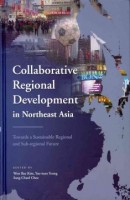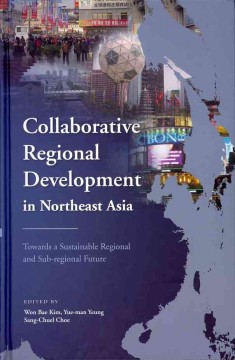 Editors: Won Bae Kim, Yue-man Yeung and Sang-Chuel Choe
Editors: Won Bae Kim, Yue-man Yeung and Sang-Chuel Choe
Publisher: The Chinese University Press, in collaboration with Columbia University Press
Book Review by: Sonu Chandiram
A conference was held on the island of Jeju in South Korea on July 7, 8 and 9 in 2010 with 31 participants from China, Japan, Russia and South Korea, wherein 23 papers were presented on matters relating to the common interests of these four nations.
Organized by South Korea’s Presidential Committee on Regional Development (PCRD) the purpose of that meeting was to reshape regional policy as a result of recent changes in the global economic landscape, like increased competition.
In particular, there has been in recent years, a deepening of globalization and increasing economic interdependence in Northeast Asia. That has made it necessary to take a closer look on cross-border cooperation, the editors of this book point out.
Fifteen of the papers presented at that mid-2010 conference are laid out in the chapters of this volume. It also has a chapter with conclusions written by two of the three editors: Won Bae Kim and Sang-Chuel Choe.
This book is organized around three groups of issues, namely regional perspectives, sub-regional perspectives and governance of cross-border regions. These three groups of issues respectively, are in Parts I, II and III of this book
Among the topics covered in the chapters of this book are:
- Trans-border regional development and community building
- Mechanisms of economic cooperation
- Spatial policies in the Northeast Asian countries
- Cross-border migration
- Evolving transport and logistics
- Business and travel linkages among world cities
- Sub-regional development and community building
- Sino-Russian cross-border cooperation with a focus on energy
- The pan-Yellow sea sub-region: Chinese perspectives
- The pan-Yellow Sea sub-region: Korean perspectives
- North Korea’s cross-border cooperation
- He Busan-Fukuoka trans-strait zone
- The Pearl River Delta: governance issues and implications
- Institutional frameworks
- Conclusions: towards a sustainable regional and sub-regional future
At the end of each chapter in this book is a section called Notes, and a list of References – articles, books, etc – for further reading, consultation and research.
This conference was different from past ones on similar matters in three major ways:
1. It brought together different threads of detailed discussions on cross-border cooperation of the last 20 years.
2. It tried to get international, national and local perspectives with the help of government officials at the national and local levels; as well as international experts, researchers and scholars; and
3. Practical suggestions were examined to come up with a concrete basis for cross-border cooperation.
This book contains helpful charts, diagrams and tables that help the reader better absorb and understand the text material.
This is a useful book on how the people of four countries in Northeast Asia – China, Japan, Russia and South Korea – can work together for their common good. It helps promote thinking and planning to take advantage of opportunities available now and the years ahead. It can help them develop an agenda for cross-border cooperation and development.
The recent economic crisis they faced, along with the accelerating pace of globalization (read: competition) brought about unprecedented challenges and severe pressures such as loss of export revenue, loss of jobs, and declines in the growth of gross domestic product. This book is a look back on those difficult days, and a positive look ahead, as it provides some tools on how we can proceed with close cooperation to achieve higher levels of economic growth.
The editors and the contributors are to be congratulated for not only organizing and participating in the PRCD conference of July 2010, but also for putting together their materials and coming out with this fine book.







